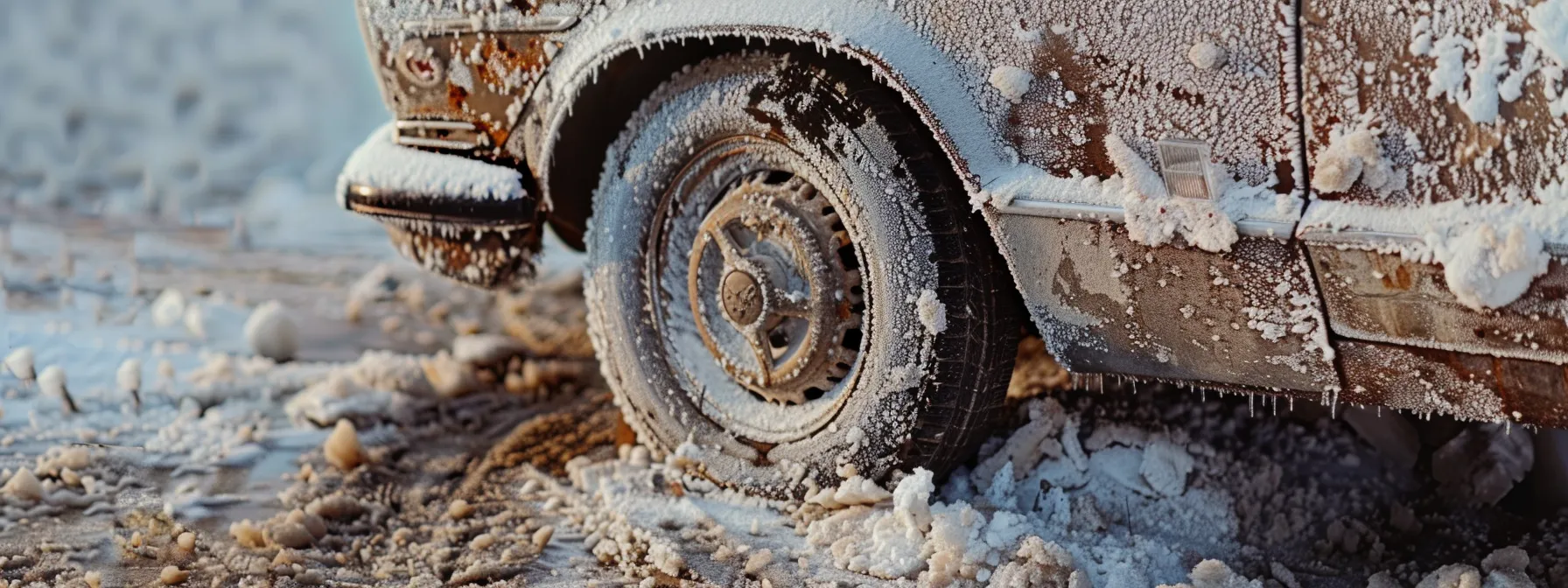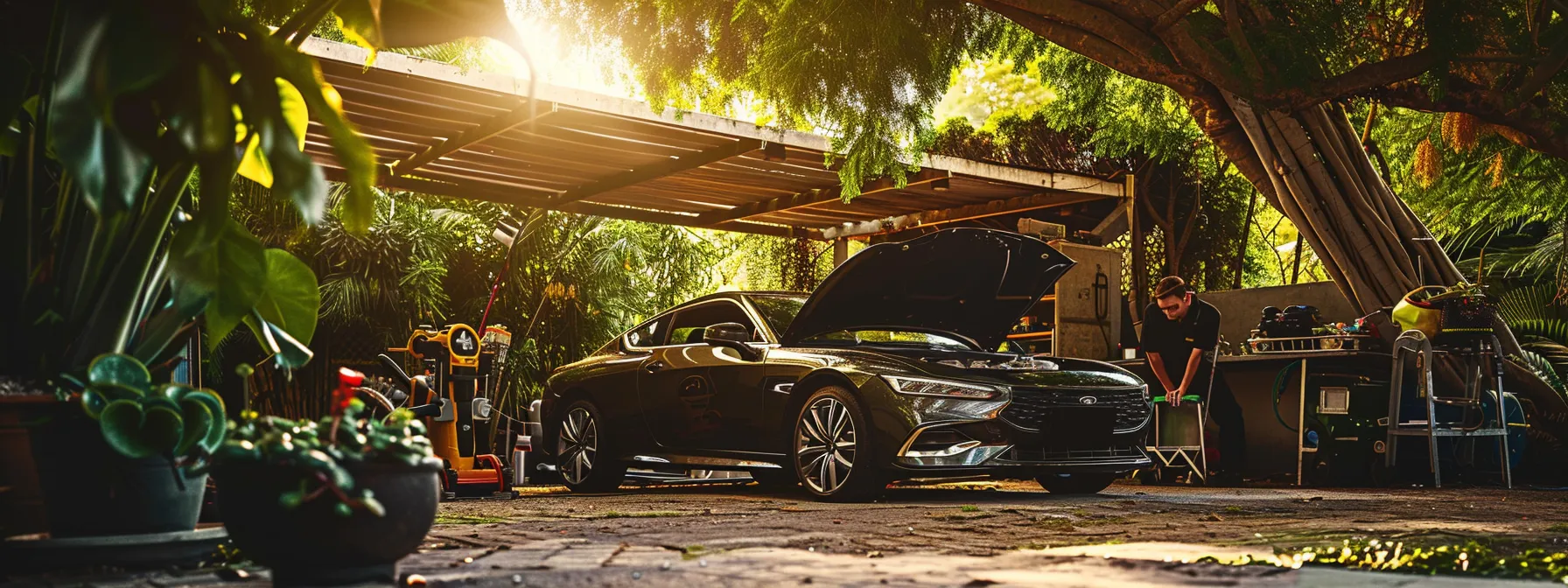Are you aware that regular seasonal vehicle maintenance can extend the life of your car and enhance its performance? Many vehicle owners overlook vital upkeep tasks, leading to issues like poor visibility or radiator problems. In this guide, readers will discover essential tips for maintaining their cars through each season, including crucial strategies for spring, summer, fall, and winter. By following these recommendations, car owners can solve common maintenance headaches and ensure their vehicles operate smoothly all year round, reducing the need for frequent trips to the auto mechanic.
Key Takeaways
- Seasonal maintenance is essential for vehicle performance and longevity throughout the year
- Regular inspections can prevent costly repairs and enhance driving safety
- Appropriate tire care is crucial for traction and vehicle handling in varying weather conditions
- Maintaining fluid levels and quality ensures optimal engine performance and reliability
- Keeping a clean vehicle protects its value and enhances the overall driving experience
Understanding Seasonal Impacts on Your Vehicle

Weather changes significantly impact vehicle performance and can lead to issues such as corrosion from road salt in winter or the need for snow tires during snowy months. Common seasonal wear and tear issues, including the effectiveness of pumps and compressors, require adaptive maintenance routines throughout the year. Seasonal inspections are crucial for identifying potential problems early and ensuring the vehicle’s longevity, making it essential to refer to the vehicle identification number for specific service recommendations.
How Weather Changes Affect Vehicle Performance
Weather changes can significantly impact vehicle performance, leading to increased wear and tear on various components. For instance, during the snowy months, road salt can cause corrosion, which may affect the vehicle’s metal parts. In spring, conducting a thorough spring cleaning of the vehicle helps to remove any residual debris and prevent damage, while also ensuring that windshield wipers and headlights are functioning properly to enhance safety on the roads.
Ultraviolet rays during the summer can degrade tire rubber and fade vehicle paint, which necessitates regular inspections and maintenance. Additionally, maintaining proper tire pressure is crucial, as extreme temperatures can cause fluctuations affecting overall vehicle performance. Ensuring access to adequate drinking water for engine cooling systems also becomes essential to avoid overheating during warmer months, contributing further to the vehicle’s longevity and reliability.
Common Seasonal Wear and Tear Issues
Seasonal wear and tear on vehicles often manifests in various ways, directly affecting crucial components, including the combustion system. During colder months, the wear on engine oil likens to how colder temperatures can thicken the fluid, leading to increased strain on the engine’s parts. Routine checks on essential elements like the windshield washer fluid, which may freeze or deplete quickly in winter, become vital to ensure visibility and safety while driving.
In addition, extreme weather conditions can contribute to the degradation of tires and brakes, causing reduced effectiveness and requiring more frequent inspections. Keeping a seasonal maintenance checklist can aid car owners in identifying these wear patterns and ensuring that necessary repairs are made promptly. A first aid kit within the vehicle can also provide peace of mind during emergencies, highlighting the importance of being prepared for unexpected situations that may arise during seasonal changes.
Adapting Maintenance Routines Throughout the Year
To effectively maintain a vehicle throughout the year, owners should adapt their maintenance routines to align with seasonal changes. During winter, for example, it is essential to check tire tread depth regularly, as adequate tread is crucial for traction on icy roads. Additionally, ensuring proper airflow to the engine and keeping the fuel tank sufficiently full can prevent moisture accumulation, which could lead to fuel line issues in colder weather.
As the seasons change, so should the focus on various components of the vehicle. In the summer months, routine checks of coolant levels become vital to prevent overheating, while ensuring the transmission fluid, such as that found in AAMCO transmissions, is at optimal levels promotes smooth operation. A thorough inspection at each transition not only enhances safety but also contributes to the longevity and reliability of the vehicle, ultimately serving to protect the investment made in the car.
Importance of Seasonal Inspections
Seasonal inspections are a critical aspect of vehicle maintenance that ensure optimal performance throughout the year. By checking essential components, such as oil quality, the effectiveness of the air conditioning system, and the condition of the automatic transmission, car owners can identify potential issues before they escalate into costly repairs. For instance, performing a routine oil change in the spring can prevent engine wear and enhance fuel efficiency, while verifying the functionality of the air conditioning system before summer can ensure comfort during hot weather.
Moreover, seasonal inspections provide an opportunity to assess tire rotation and brake condition, both of which are vital for safety and performance. Utilizing tools like a flashlight during these checks can help detect worn brake pads or low tread depth that may not be immediately visible. By prioritizing these maintenance tasks seasonally, vehicle owners can enhance the longevity of their vehicles, reduce the likelihood of unexpected breakdowns, and ultimately enjoy a safer driving experience.
Spring Maintenance Tips for Your Car

Spring maintenance is critical for ensuring optimal vehicle performance after winter’s harsh conditions. Key tasks include checking and replacing wiper blades for clear visibility, inspecting tires for wear and proper inflation to enhance safety, and testing batteries to prevent unexpected failures. Additionally, cleaning and inspecting the cooling system helps avoid overheating, while examining brakes is essential for safe driving. These steps are fundamental to effective vehicle maintenance during the spring months.
Checking and Replacing Wiper Blades
Checking and replacing wiper blades is a crucial part of spring maintenance that enhances visibility during rain or sudden weather changes. Old or worn-out blades may leave streaks on the windshield, impairing the driver’s view and compromising safety. Regularly inspecting wiper blades ensures they function effectively, which is especially important for those planning a road trip, where clear visibility is essential for safe travels.
In addition to wiper blades, car owners should also consider checking related components like the air filter, which affects cabin air quality, and ensuring the spare tire is in good condition for unexpected flat tires. When performing this maintenance, it is wise to also inspect the strut system for any signs of wear or damage, as a well-maintained suspension contributes to overall vehicle stability and fuel efficiency when driving. Keeping these elements in check promotes a safer and more enjoyable driving experience.
- Inspect wiper blades for wear.
- Replace wiper blades if necessary.
- Check air filter and spare tire condition.
- Examine strut system for wear.
- Ensure overall visibility and safety for driving.
Inspecting Tires for Wear and Proper Inflation
Inspecting tires for wear and proper inflation is a crucial aspect of car maintenance that should be prioritized during the spring months. As winter can lead to tire damage from potholes and harsh conditions, checking for visible cracks or irregular wear patterns is essential. Ensuring that tires are inflated to the recommended pressure can enhance vehicle handling and fuel efficiency, providing a safer driving experience.
Additionally, inadequate tire maintenance can create dangerous situations, such as blowouts or reduced traction, especially during spring rainstorms. It is also important to consider the potential buildup of mold in wet conditions, which can affect both the tires and the vehicle’s interior. By adhering to the manufacturer’s specifications and conducting regular inspections, such as checking the tread depth and monitoring for leaks, vehicle owners can ensure their tires remain in optimal condition throughout the season.
Testing and Replacing Batteries if Needed
As spring arrives, one key maintenance task is testing the vehicle’s battery, which can be strained by winter’s cold temperatures. A thorough inspection of the battery terminals for corrosion and clean connections is essential. If there is any indication of sluggish performance during starting, replacing the battery may be necessary to prevent unexpected failures when driving, especially during pollen season when allergenic particles can also clog filters and systems.
Additionally, ensuring that the battery is adequately charged and free from moisture can help prevent issues related to mildew growth. Drivers should be mindful of their vehicle’s cooling system and verify that antifreeze levels are appropriate for the warm weather ahead. Regular battery checks can protect the vehicle’s electrical systems and contribute to a smoother driving experience, reinforcing the importance of timely maintenance:
- Inspect battery terminals for corrosion.
- Test the battery’s charge regularly.
- Replace the battery if performance declines.
- Check for moisture to prevent mildew.
- Maintain antifreeze levels for optimal cooling.
Cleaning and Inspecting the Cooling System
Cleaning and inspecting the cooling system is a crucial part of spring vehicle maintenance. A thorough examination of the coolant levels ensures that the engine operates efficiently, preventing overheating during warmer months. Drivers should also check for any unusual noise, which may signal issues within the cooling system, such as a malfunctioning water pump or radiator, potentially leading to costly repairs if left unchecked.
Additionally, it’s important to inspect hoses and connections for leaks or wear. Any signs of pressure loss could indicate that coolant is not circulating properly, which can affect the overall performance of the vehicle. Regular maintenance, including flushing the cooling system and replacing old coolant, can contribute to a longer lifespan for components and a smoother driving experience, making it essential to prioritize this task during spring inspections.
Examining Brakes for Safety
Examining brakes for safety is an essential part of spring vehicle maintenance. Over the winter, debris can accumulate on brake components, which might hinder their performance. By checking the brake pads and rotors for wear, as well as inspecting the brake fluid levels, vehicle owners can ensure their braking system operates effectively when it’s needed most. Maintaining clear visibility of the steering wheel response during braking is crucial, as it directly reflects the condition of the vehicle’s braking system.
Additionally, assessing the brake lines for any leaks or wear can prevent potential issues in the future, contributing to overall safety. If a driver notices a spongy feel in the steering or any changes in the braking response, it may indicate the need for immediate service. Regular checks not only enhance performance but also help maintain the integrity of the vehicle’s transmission system, ensuring a smoother and safer driving experience overall.
Summer Vehicle Care Strategies

Summer vehicle care strategies focus on several key areas essential for maintaining optimal performance during the hotter months. Ensuring air conditioning efficiency keeps the cabin comfortable, while monitoring the engine cooling system prevents overheating. Keeping tires properly inflated and aligned reduces the risk of a flat tire, enhancing overall safety. Protecting the car’s exterior and interior from sun damage, along with checking fluid levels and quality, further safeguards the vehicle from heat-related issues. Each of these aspects is vital to ensuring a smooth and enjoyable driving experience during the summer months.
Ensuring Air Conditioning Efficiency
Ensuring air conditioning efficiency is crucial as the temperature rises during the summer months. A properly functioning air conditioning system not only keeps the vehicle’s interior comfortable but also helps prevent excess moisture buildup, which can lead to mildew and unpleasant odors. Regular inspections, including checking refrigerant levels and replacing cabin air filters, can significantly enhance ac system performance and reliability.
Car owners can benefit from specific tips to maintain their air conditioning systems throughout the season. This includes running the system for a few minutes every week to keep it lubricated and identifying any unusual noises that may indicate a need for service. If problems arise, consulting an auto repair shop can provide solutions that ensure the vehicle’s air conditioning system operates effectively, safeguarding both comfort and safety during summer travels:
Monitoring Engine Cooling Systems
Monitoring the engine cooling system is essential for preventing overheating during the hot summer months. High temperatures can put extra stress on components such as the radiator and water pump, which play critical roles in maintaining optimal engine temperature. Regular checks of coolant levels and ensuring the quality of motor oil can significantly boost engine performance and prolong the life of the vehicle, allowing for smooth operation and better traction on the road.
Additionally, inspecting hoses and connections for any leaks or wear is vital to avoid potential breakdowns. Having a reliable battery charger on hand is a practical solution for ensuring the battery remains charged, especially when extreme heat can lead to reduced battery performance. Proactively managing these aspects of auto care not only enhances the vehicle’s reliability but also contributes to a safer driving experience throughout the summer.
- Regular checks of coolant levels
- Ensuring quality of motor oil
- Inspecting hoses and connections for leaks
- Having a battery charger available
- Monitoring engine performance for reliability
Keeping Tires Properly Inflated and Aligned
Keeping tires properly inflated and aligned is critical for ensuring optimal performance during the summer months. As temperatures rise, tire pressure can fluctuate, leading to under-inflation or over-inflation, both of which can impact fuel efficiency and handling. Regular checks are essential, and using a reliable tire gauge can help maintain the correct pressure. For added protection, applying a quality wax to the tires can shield them from heat and UV damage, extending their lifespan and performance.
In addition to checking tire pressure, ensuring proper alignment is vital to prevent uneven wear and enhance driving safety. Misaligned tires can lead to poor handling and increased friction on the road, especially during summer travel. Car owners should consider scheduling a professional alignment check if they notice steering wheel vibrations or if their vehicle pulls to one side. Incorporating these car care tips can significantly improve overall vehicle performance, making sure drivers remain confident and safe during their summer adventures on the road.
Protecting Your Car’s Exterior and Interior From Sun Damage
To effectively protect a vehicle’s exterior and interior from sun damage during the summer months, car owners should consider applying a high-quality wax to the surface. This creates a barrier against UV rays and dirt, helping to maintain the finish and preventing premature fading. Regularly washing the vehicle to remove dirt and contaminants also plays a significant role in preventive care; neglecting this can lead to scratches that may void the warranty if not addressed properly.
Inside the vehicle, using sunshades and parking in shaded areas can prevent the dashboard and interior fabrics from deteriorating due to excessive heat. Additionally, keeping an eye on the check engine light is vital, as overheating caused by sun exposure can lead to engine damage or leaks. By implementing these strategies, car owners can significantly extend the life of their vehicle’s interior and exterior while ensuring it remains in optimal condition throughout the summer.
Checking Fluid Levels and Quality
During the summer months, checking fluid levels and quality is essential for maintaining vehicle performance and preventing overheating. Motor oil should be inspected for clarity and viscosity, as dirty or degraded oil can hinder engine efficiency and lead to costly repairs. Regularly ensuring that coolant levels are adequate protects against engine damage, as it helps regulate temperatures during hot weather, thereby enhancing overall reliability on the road.
Furthermore, attention should be given to transmission fluid, brake fluid, and windshield washer fluid. Ensuring these fluids are at the recommended levels and free from contamination not only improves vehicle safety but also enhances driving comfort. For example, adequate brake fluid is crucial for reliable stopping power, especially during heavy summer travel, while clean windshield washer fluid ensures clear visibility in varying conditions. Consistent monitoring of these fluids can empower vehicle owners to catch potential issues early, ultimately extending the life of their vehicle.
Fall Car Maintenance Essentials

Fall maintenance is vital for ensuring a vehicle’s reliability as temperatures drop and weather conditions change. Key topics include inspecting the heating system to ensure warm air during colder months, preparing tires for wet and slippery roads, and replacing wiper blades for improved visibility in rainy conditions. Additionally, testing the battery and electrical systems, as well as checking lights and signals, is essential for navigating shorter days safely.
Inspecting the Heating System
Inspecting the heating system is a critical aspect of fall car maintenance, as it ensures that the vehicle can provide adequate warmth during colder months. Car owners should start by checking the heater core for blockages and inspecting hoses for leaks, which can hamper heating efficiency. Additionally, monitoring the level of antifreeze is essential, as it plays a vital role in maintaining an effective heating system and preventing engine overheating.
Moreover, testing the heater’s functionality before winter arrives can save drivers from unexpected discomfort. Any signs of strange odors or unusual noises when the heating system is in use may indicate underlying issues that require immediate attention. Regular maintenance of the heating system not only enhances comfort but also ensures safety on the road, making it a vital part of the comprehensive seasonal vehicle maintenance checklist:
Preparing Tires for Wet and Slippery Roads
As fall approaches, preparing tires for wet and slippery roads is essential for safe driving. Vehicle owners should inspect tire tread depth, ensuring it meets safety standards to enhance traction on slick surfaces. Additionally, maintaining proper tire pressure is crucial, as colder temperatures can cause pressure to drop, leading to reduced effectiveness during adverse weather conditions.
Investing in high-quality all-season or winter tires may provide the best performance as conditions change. These specialized tires feature enhanced grip and flexibility, allowing for improved handling on wet roads. Regular rotation and alignment checks are also vital, as uneven wear can affect control and stability, making it necessary to prioritize these maintenance tasks to ensure a safe driving experience throughout the fall months.
Replacing Wiper Blades for Rainy Weather
Replacing wiper blades for rainy weather is an essential step in fall car maintenance. As rainfall increases during this season, ensuring that wiper blades are in good condition significantly enhances visibility. Worn or damaged blades can streak and smear, impairing a driver’s ability to see clearly in adverse conditions. Regular checks and timely replacements can prevent potential safety hazards on the road.
Testing the Battery and Electrical Systems
Testing the battery and electrical systems is vital during fall maintenance to ensure reliable vehicle performance as temperatures drop. Cold weather can significantly strain the battery, potentially leading to unexpected failures. Regularly checking battery terminals for corrosion and ensuring clean connections will help maintain optimal functionality, reducing the risk of starting issues as the season progresses.
In addition to battery health, car owners should evaluate the entire electrical system, including headlights, taillights, and dashboard indicators. Ensuring all lights are functioning optimally enhances visibility and safety, particularly as daylight hours decrease in fall. By prioritizing these checks, vehicle owners can address potential issues before they escalate, thereby preventing inconvenience and ensuring smooth travels throughout the season.
Checking Lights and Signals for Shorter Days
As daylight hours decrease in fall, ensuring that all lights and signals on a vehicle are functioning properly becomes essential for safe driving. Car owners should check headlights, taillights, brake lights, and turn signals for any signs of dimming or complete failure. Regular inspections can prevent accidents and enhance visibility during early evenings and inclement weather conditions.
Additionally, replacing burnt-out bulbs promptly is crucial to maintain safety on the road. It is advisable for drivers to ensure that the headlights are properly aimed to maximize illumination and visibility at night. Taking these proactive measures allows for confident travel during shorter days, ultimately supporting a more secure driving experience:
- Inspect headlights, taillights, and turn signals.
- Replace any burnt-out bulbs immediately.
- Aim headlights correctly for optimal visibility.
- Check brake lights regularly for safety.
- Prioritize visibility to enhance driving confidence.
Preparing Your Vehicle for Winter

Preparing Your Vehicle for Winter
Proper winter preparation is essential for maintaining vehicle performance and safety during the colder months. This includes installing winter or all-season tires, using appropriate engine oil suited for cold temperatures, and inspecting the battery for potential replacements. Additionally, ensuring the cooling system has adequate antifreeze levels and keeping emergency supplies in the car are crucial steps that enhance safety and reliability throughout winter travels.
Installing Winter Tires or All-Season Tires
Installing winter tires or all-season tires is a crucial step for vehicle owners preparing for winter conditions. Winter tires are specifically designed with rubber compounds that remain flexible in colder temperatures, providing better traction on ice and snow. For those residing in areas with milder winters, high-quality all-season tires can offer a balanced performance, but they may not deliver the same level of grip as dedicated winter tires during severe weather.
When considering new tires, car owners should assess their driving habits and local climate. For frequent travelers on icy roads, investing in winter tires can enhance safety and handling during harsh conditions. Conversely, all-season tires may suffice for individuals primarily navigating clear, dry roads. Regularly checking tread depth and replacing tires as needed ensures optimal performance, ultimately protecting the vehicle investment while enhancing driving confidence in winter weather.
Using Appropriate Engine Oil for Cold Temperatures
Using appropriate engine oil for cold temperatures is a vital part of winter vehicle maintenance. During colder months, conventional oil may become thick, impacting the engine’s performance and increasing the risk of damage. Switching to winter-grade oil, typically with a lower viscosity rating, ensures smoother circulation at low temperatures, allowing for better lubrication and protection of engine components, ultimately enhancing reliability during winter starts.
Car owners should consult their vehicle’s owner’s manual to identify the recommended oil type for winter conditions. Synthetic oils often perform better in cold weather, providing improved engine protection and fuel efficiency. Regularly checking oil levels and replacing it as needed not only preserves engine health but also extends the vehicle’s lifespan by preventing cold start issues and enhancing overall performance:
- Assess the current engine oil type.
- Consider switching to a winter-grade or synthetic oil.
- Check oil levels regularly for optimal performance.
- Refer to the owner’s manual for specific recommendations.
- Monitor for any signs of oil degradation.
Inspecting and Replacing the Battery if Necessary
Inspecting and replacing the battery is a crucial step in preparing a vehicle for winter. Cold temperatures can severely impact battery performance, leading to starting issues when it’s needed most. Car owners should regularly check battery connections for corrosion and ensure terminals are clean to maintain optimal functionality throughout the winter months.
If a battery is more than three years old or shows signs of weakness during testing, it may be time for a replacement. Drivers should test the battery’s charge and inspect for any swelling or leakage. Taking these proactive measures helps prevent unexpected breakdowns and ensures a reliable start in cold weather:
- Check battery connections for corrosion.
- Test the battery’s charge regularly.
- Replace the battery if it is older than three years.
- Look for signs of swelling or leakage.
- Ensure optimal battery performance during winter.
Ensuring the Cooling System Has Proper Antifreeze Levels
Ensuring the cooling system has proper antifreeze levels is crucial for optimal vehicle performance during winter. Antifreeze prevents the engine from freezing and protects vital components from corrosion. Car owners should regularly check the antifreeze levels and top off with the appropriate mixture of antifreeze and water, ensuring it meets the manufacturer’s recommendations to maintain engine efficiency and prevent damage during extreme cold.
In addition to checking levels, inspecting the cooling system for leaks or damage can save car owners from costly repairs down the line. A well-maintained cooling system not only aids in preventing overheating during warmer days but also ensures a reliable start on cold winter mornings. Proper antifreeze levels significantly enhance vehicle reliability, making it a key aspect of winter preparations.
Keeping Emergency Supplies in Your Car
Keeping emergency supplies in a vehicle is crucial for winter preparedness. Essential items such as a first aid kit, blanket, flashlight, and non-perishable snacks can provide comfort and support during unexpected situations, particularly in severe weather. Car owners should also include jumper cables, a shovel, and road flares or reflective triangles in their emergency kit to ensure they are equipped to handle potential breakdowns or accidents during snowy conditions.
In addition to these basic supplies, maintaining a portable phone charger can help ensure communication with roadside assistance if needed. Vehicle owners should routinely check their emergency kit, replacing items that may have expired or been used. By being proactive in their preparations, drivers can enhance their safety and readiness for winter travel challenges, ultimately contributing to a more secure driving experience.
Year-Round Maintenance Practices for Optimal Performance

Year-Round Maintenance Practices for Optimal Performance
Regular oil and filter changes, consistent tire rotations and alignments, and maintaining fluid levels are vital for vehicle performance. Scheduling routine professional inspections and keeping the vehicle clean inside and out are equally important. Each of these practices contributes to the longevity and reliability of the vehicle, ensuring that it performs optimally throughout the year.
Regular Oil and Filter Changes
Regular oil and filter changes are crucial for maintaining optimal vehicle performance, as they ensure the engine remains well-lubricated and free of harmful contaminants. Neglecting this essential maintenance task can lead to decreased fuel efficiency, increased engine wear, and ultimately costly repairs. Car owners should refer to their vehicle’s owner’s manual for recommended intervals, typically every 3,000 to 5,000 miles, to keep the engine running smoothly.
Utilizing high-quality oil and filters tailored to specific vehicle needs enhances engine longevity and efficiency. For example, synthetic oils tend to offer better protection in extreme temperatures compared to conventional oils. By establishing a routine for oil and filter changes, car owners can proactively address potential engine issues and maintain reliable vehicle performance year-round:
- Refer to the owner’s manual for recommended oil change intervals.
- Use high-quality oil and filters suitable for your vehicle.
- Regularly check oil levels and top off if necessary.
- Schedule oil changes at consistent mileage intervals.
- Monitor engine performance for signs of oil breakdown.
Consistent Tire Rotations and Alignments
Consistent tire rotations and alignments are critical components of vehicle maintenance that significantly enhance safety and performance. Regular tire rotations help ensure even wear across all tires, which not only extends the lifespan of the tires but also improves fuel efficiency. Vehicle owners should follow the manufacturer’s recommendations regarding rotation intervals, which typically range from every 5,000 to 8,000 miles. This practice is essential to maintain proper traction, especially in varying weather conditions, ultimately contributing to a better driving experience.
Proper wheel alignment is equally important, as misaligned wheels can lead to uneven tire wear and affect overall vehicle handling. A vehicle that pulls to one side or displays uneven tire wear patterns may be in need of an alignment check. Having a trained technician perform this service ensures that the vehicle operates smoothly, promotes even tire wear, and enhances control. Investing time in tire rotations and alignments can save car owners from costly replacements and improve their vehicle’s reliability on the road.
Maintaining Fluid Levels and Quality
Maintaining fluid levels and quality is a fundamental practice for optimal vehicle performance throughout the year. Regularly checking and topping off essential fluids, including engine oil, coolant, brake fluid, and transmission fluid, ensures that vital systems operate efficiently. For instance, low coolant levels can lead to engine overheating, while insufficient brake fluid can compromise braking effectiveness, creating potential safety hazards on the road.
Routine inspections of fluid quality are equally important, as dirty or degraded fluids can diminish performance and cause costly repairs. Car owners should look for changes in color or texture in oils and fluids, as these can indicate contamination or the need for replacement. By prioritizing fluid maintenance, vehicle owners not only enhance their car’s reliability but also prevent unexpected breakdowns, ultimately extending the lifespan of their vehicle and safeguarding their investment.
Scheduling Routine Professional Inspections
Scheduling routine professional inspections is a vital part of maintaining a vehicle’s performance and safety year-round. These inspections allow trained technicians to evaluate key components such as the engine, brakes, and suspension, ensuring they operate efficiently. Regular professional checks can identify potential issues that may escalate into costly repairs, helping car owners avoid unexpected breakdowns and prolonging the life of their vehicles.
Keeping Your Vehicle Clean Inside and Out
Keeping a vehicle clean inside and out is essential for maintaining its value and longevity. Regular cleaning prevents the buildup of dirt, grime, and debris that can damage paint, corrode metal surfaces, and create an unclean interior. For example, routine washing and waxing protect the exterior from elements like UV rays and road salt, while vacuuming and wiping down surfaces inside ensure a comfortable and inviting driving experience.
Additionally, a clean vehicle enhances safety by improving visibility through clear windows and well-maintained mirrors. Monitoring and cleaning the interior upholstery can also prevent odors and stains, preserving the car’s aesthetic appeal. For car owners, adopting a consistent cleaning schedule, whether through professional detailing or DIY efforts, proves beneficial in protecting their investment and contributes to overall satisfaction while on the road.




